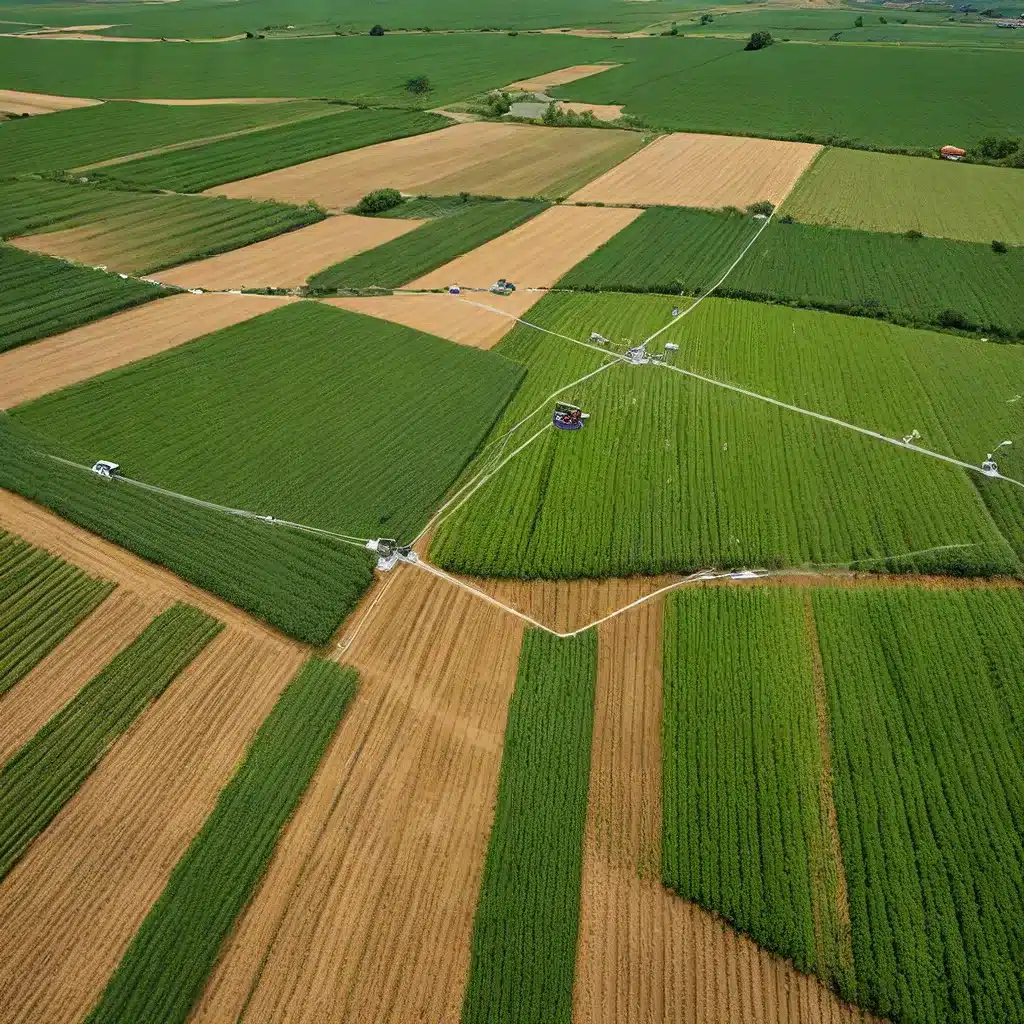
The Rise of Sensor Networks in Agriculture
Sensor networks have emerged as a transformative technology in the realm of modern agriculture, revolutionizing the way farmers and agricultural professionals approach precision farming and resource management. These interconnected networks of sensors, IoT (Internet of Things) devices, and data analytics platforms have unlocked new horizons for optimizing crop yields, reducing resource consumption, and enhancing overall sustainability in the agricultural sector.
At the heart of this agricultural revolution lies the ability of sensor networks to collect real-time data from various sources within the farming ecosystem. From soil moisture levels and air temperature to pest infestations and equipment performance, these sensor-driven systems provide unprecedented visibility into the intricate dynamics of agricultural operations. By leveraging this data-driven approach, farmers can make informed decisions, automate repetitive tasks, and optimize the utilization of crucial resources such as water, fertilizers, and energy.
Precision farming, also known as site-specific crop management, is one of the most prominent applications of sensor networks in agriculture. By deploying a network of sensors across their fields, farmers can collect granular data on soil conditions, plant health, and environmental factors. This information is then analyzed using advanced data analytics and machine learning algorithms to generate tailored recommendations for fertilizer application, irrigation schedules, and pest management strategies. This precision-driven approach not only enhances crop yields but also reduces the environmental impact of traditional farming practices.
Optimizing Resource Management in Smart Agriculture
Water management is a critical aspect of sustainable agriculture, and sensor networks play a pivotal role in this domain. Soil moisture sensors strategically placed throughout the fields can monitor water levels in real-time, enabling automated irrigation systems to adjust water delivery based on the precise needs of the crops. This precision-based irrigation not only conserves water but also ensures that plants receive the optimal amount of moisture, leading to improved plant health and yield quality.
In addition to water management, sensor networks also contribute to the optimization of other critical agricultural resources, such as energy and fertilizers. By integrating sensors that monitor factors like soil nutrient levels, weather patterns, and equipment performance, farmers can fine-tune their energy usage and optimize the application of fertilizers. This not only reduces operational costs but also minimizes the environmental impact associated with over-application of fertilizers, which can lead to issues like water pollution and soil degradation.
Enhancing Security and Resilience in IoT-Enabled Smart Agriculture
As sensor networks become increasingly integrated into agricultural systems, the importance of cybersecurity and data privacy has come to the forefront. IoT-enabled smart agriculture systems are vulnerable to various security threats, ranging from data breaches to malware attacks that can disrupt critical operations.
To address these concerns, robust security protocols and data encryption measures are essential to protect the integrity of sensor data and ensure the reliability of the entire system. Farmers and agricultural organizations must collaborate with technology providers and cybersecurity experts to implement secure communication protocols, access control mechanisms, and comprehensive security monitoring solutions.
The Future of Sensor Networks in Smart Agriculture
As the global population continues to grow and the demand for sustainable food production increases, the role of sensor networks in smart agriculture is poised to become even more pivotal. Beyond the current applications in precision farming and resource optimization, the future of sensor networks in agriculture holds exciting possibilities:
-
Predictive Analytics: Combining sensor data with advanced machine learning algorithms, farmers can predict crop yields, anticipate pest outbreaks, and proactively adapt their strategies to optimize productivity.
-
Autonomous Farming: Integrating sensor networks with robotic systems and autonomous vehicles can lead to the development of self-driving tractors, drones for precision spraying, and other automated farm equipment that enhance efficiency and reduce labor-intensive tasks.
-
Traceability and Supply Chain Optimization: Sensor-equipped supply chain systems can track the journey of agricultural products from farm to fork, enhancing traceability, food safety, and supply chain efficiency.
-
Sustainable Resource Management: Sensor networks can play a crucial role in monitoring and managing natural resources, such as water, soil, and energy, ensuring long-term environmental sustainability in the agricultural sector.
By embracing the transformative potential of sensor networks, the agricultural industry is poised to enhance food security, improve resource utilization, and pave the way for a more sustainable and resilient future. As the technology continues to evolve, the integration of sensor networks with other emerging technologies, such as AI, robotics, and 5G connectivity, will further amplify the impact of smart agriculture on global food production and environmental stewardship.
To explore the latest advancements and practical applications of sensor networks in the agricultural domain, visit the Sensor Networks website, a leading resource for professionals, researchers, and enthusiasts in the field of IoT and sensor-driven technologies.